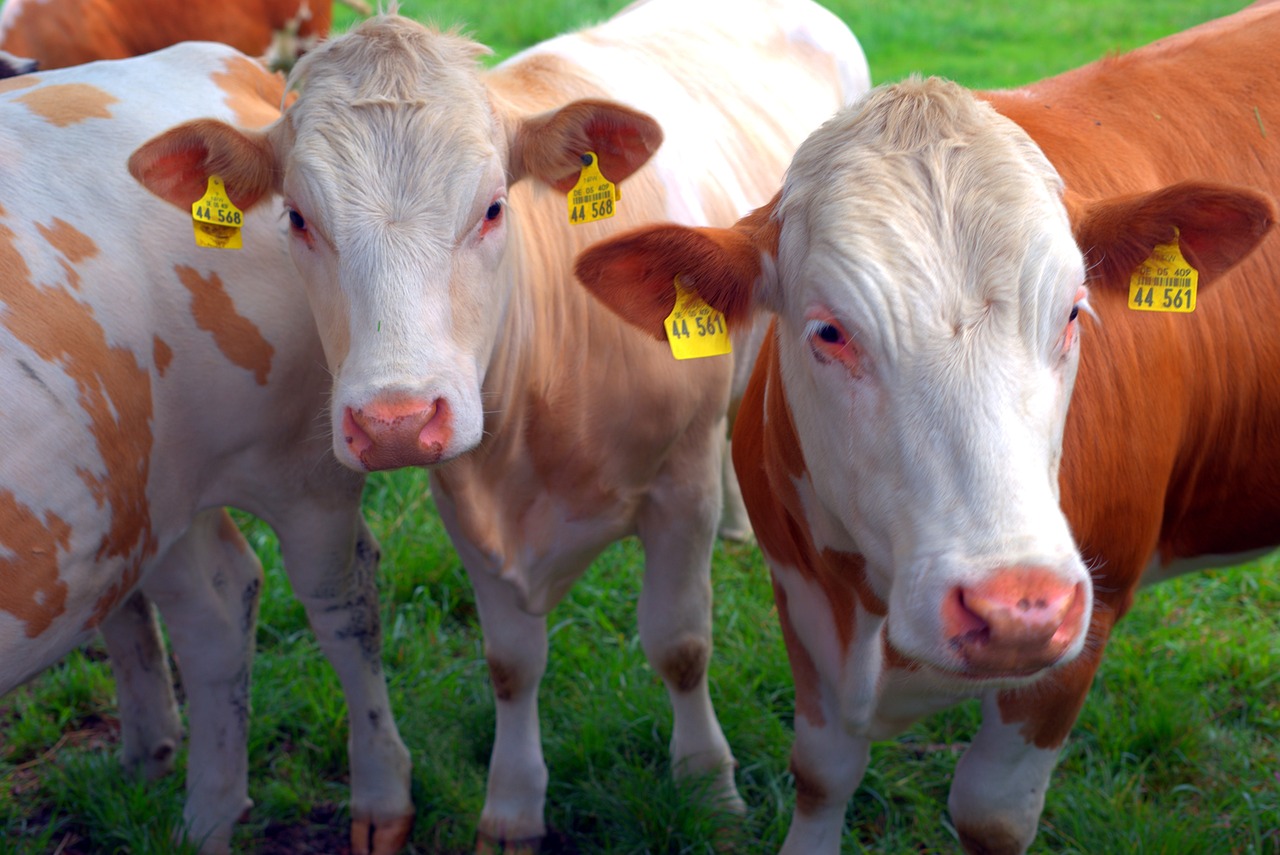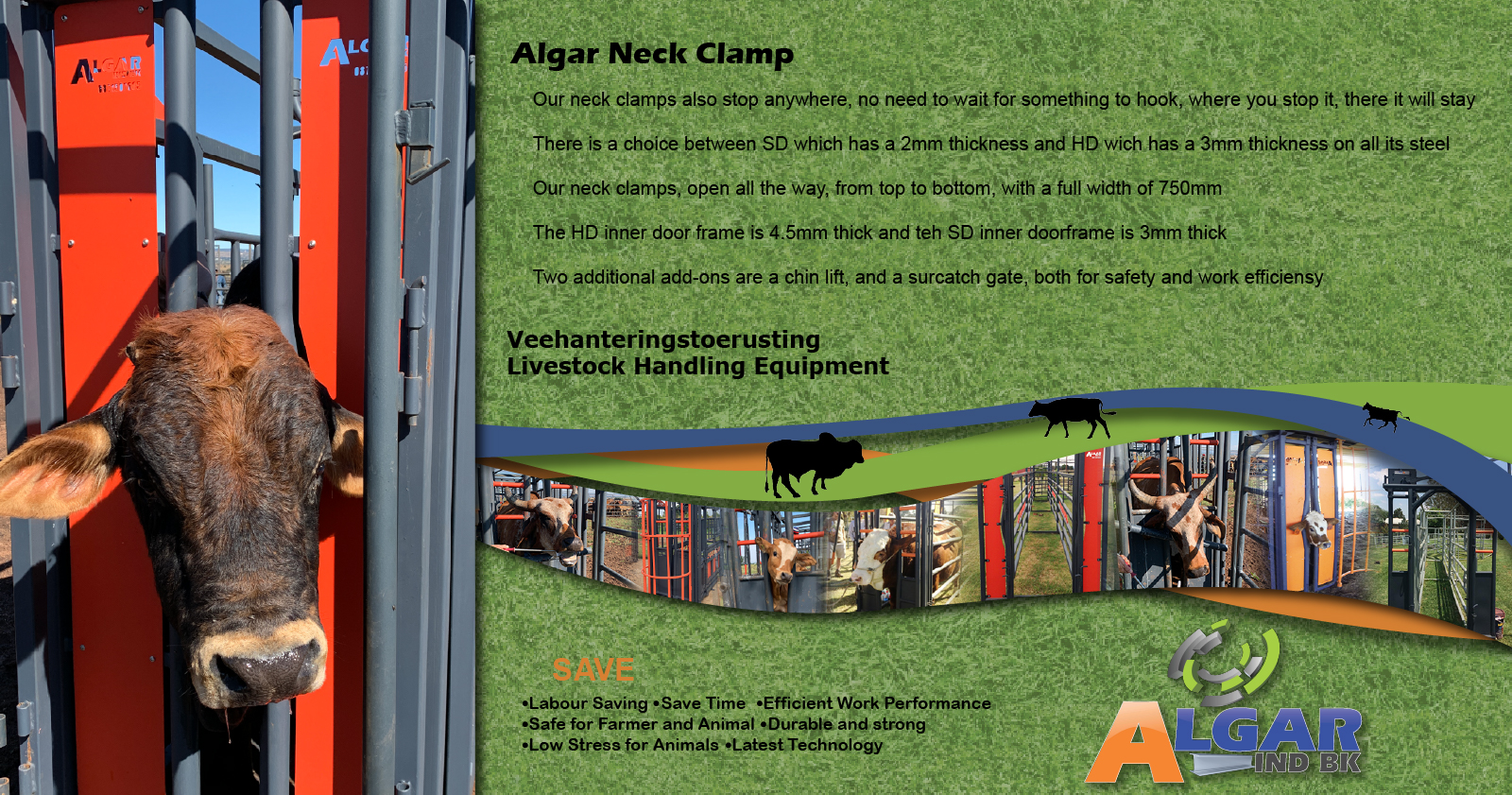Different identification or branding methods for livestock include ear tagging, ear notching, tattooing, hot branding, freeze branding, and microchipping. Each method has its own advantages and disadvantages, and the choice of method may depend on factors such as the type of animal, the intended use of the animal, and local regulations. Ultimately, the goal of livestock marking or branding is to provide a permanent and reliable means of identification of individual animals. Each of the aforementioned approaches will be unpacked in this series.
Ear tagging livestock
Ear tags are widely used as a method of identification for livestock. A special tool is used to secure the tag to the animal’s ear, and they are typically made of plastic or metal. Ear tags are convenient for large herds because they can be read from a distance.
Information such as the animal’s sex, year of birth, sire, dam, and even a herd or premises number can all be displayed clearly on an ear tag.

(Source: Pixabay by MabelAmber)
The benefits of ear tagging
Easy indicator of gender
There is no need to waste time identifying the gender of each animal. For example, insert the primary tag in left ears for males and in right ears for females.
Specify a birth year
Livestock do not have to be captured to check their teeth for their estimated age. A farmer will be able to read a tag’s number from eight metres away. Ultimately, this can increase the rate at which decisions like selecting, sorting,
culling, and breeding are made.
Options:
- Put each year in a different colour tag. Yellow tags, for instance, indicated animals born in 2020 and blue for animals born in 2021.
- Use the year of birth as the first identifier in the series. Tag 17 275, for instance, shows that this particular animal was the 275th to be tagged in 2017.

Ear tags can be found in a wide variety of shapes and colours. (Source:www.cdnangus.ca)
Sire and dam markers
Ear tags eliminate the need to peruse livestock records to find this information.
For instance, here are three approaches:
- A second ear tag can be a different colour for each sire, for example a blue for sire XYZ and purple for sire ABC.
- The offspring should be tagged with the names of their sires.
- Use a marking pen to handwrite the female’s tag number on the offspring’s ear tag. If you need to save space on the tag, write the information on the tag’s inner side.
Indicating multiple offspring for livestock such as goats and sheep
This ear tag speeds up the process of separating livestock for sale. This saves the farmer time searching through old archives. You can do this by giving each set of offspring a different colour. To show how many offspring the dam had, colour them all the same.
For example:
Red = single
Green = twin
Blue = triplet
The disadvantages of using ear tags
Due to the potential for one tag to be lost, it is suggested that two tags be used (one in each ear). Other disadvantages include tags getting torn off, and the site of the tag can become painful or infected in some animals.
Ear-tagging guidelines for livestock
Animal confinement
Make sure the animal is safely restrained so it cannot move its head during the tagging procedure. Both the animal and the person tagging it benefit from a restriction on head movement during the process.
Farmers can herd cattle more efficiently with a cattle chute, halter, and/or nose lead. Keep pigs in a small pen and secure them with hog boards or a hog snare. Hold sheep and goats securely by the head by using the correct technique.
Disinfect the area around ear tag Hygiene plays a key role in warding off infections. Use rubbing alcohol or another disinfectant to clean the applicator and the ear before inserting the tag.
The ear tag applicator

Ear tag applicator showing a properly inserted tag. (Source: www.fruugo.co.za)
Insert both halves of the tag into the applicator. Both the stud and its panel/button must be under the corresponding clips. Make sure that the pin of the applicator is not damaged in any way. Before tagging the animal, make sure the applicator is properly aligned by closing it until the two halves meet; the stud should be in the centre of the hole.
Tag applicators should be regularly serviced, and spares should be readily available in case of malfunction. An animal might be frightened by the noise made by an old, rusty tag applicator, or by the difficulty of using the device.
Position for placing tags
- (Source: www.amazon.in)
- Position the tag in the ear correctly. (Source: www.merck-animalhealth-usa.com)
It is important to pick the right spot on the ear for the tag. Tags should be placed in the middle third of the ear, between the upper and lower veins. By avoiding these veins, you prevent severe bleeding. Do not touch the concha (the ear’s central ridge of cartilage) either. If the ear tag breaks through available in case of malfunction. An animal might be frightened by the noise made by an old, rusty tag applicator, or by the difficulty of using the device. the skin of the ridges, it may cause infection or permanent disfigurement.
You run the risk of the tag snagging and being ripped out if you place it too far outside the advised area, and you run the risk of pinching or necrosis if you place it too far inside the ear.
Electronic identification (EID) tags should be applied so that the male visual panel is on the outer back of the ear and the female EID button is inside the ear canal.
Tagging
To tag the specified spot in the ear, simply insert the applicator there. Release the applicator’s snap after you have closed it quickly and securely.
Verify the tag is inserted properly, comfortably, and securely. Take down all of the pertinent animal information.
Beware of Infection
Keep an eye on the tagged area for any signs of infection after the animal has been identified. To avoid infection, hydrogen peroxide should be applied topically to the ear tag puncture for five to seven days. In the event of a severe
infection, veterinary assistance should be sought.
Ear tagging guidelines for livestock are available through the provided links:
Botswana
Namibia
https://www.lac.org.na/laws/2017/6476.pdf
Zimbabwe
https://www.swm-programme.info/legal-hub/zimbabwe/animalproduction
References
Farm and Dairy Staff. (2017) How to tag livestock properly. Farm and Dairy. Available at: https://www.farmanddairy.com/top-stories/howto-properly-tag-livestock/440560.html
Premier1Supplies. (2017) How Ear Tags Can Help You… An Essential Tool in Livestock Management. Available at: https://www.premier1supplies.com/newsletters/01-18-2017-allspecies.html
Emendel. (2018) How to properly tag cattle. Autodesk Instructables. Available at: https://www.instructables.com/How-to-ProperlyTag-Cattle/












